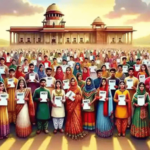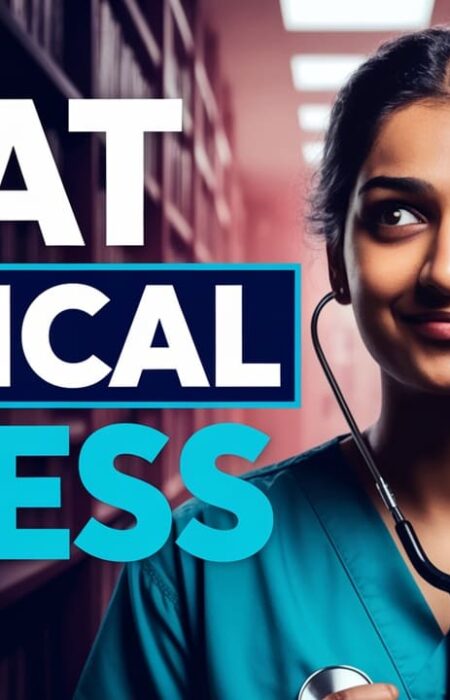How to become a doctor in India?
In India, being a doctor takes dedication, work, and perseverance. The journey takes 10-12 years. This blog covers everything from early school to super-specialty level, including financial and safety considerations.
Deciding on a Career Path in 12th Grade
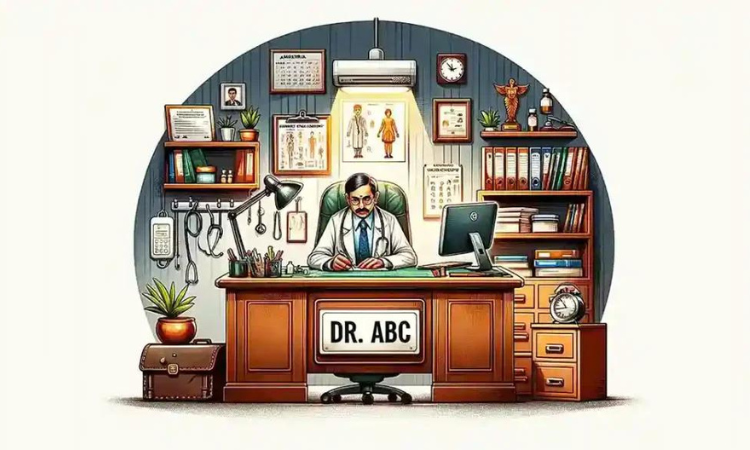
Your choice in choosing the 11th-class subject sets the stage for your medical career. Physics, Chemistry and Biology must be chosen in the Science stream. Biology was once a compulsory NEET requirement. However, a 2024 update allows PCM+ Biotechnology to give NEET.
Impact on Prospects for the Future
It really does not matter how much percentage you scored in 10th standard.
However, a good 12th percentage is needed to be eligible for the NEET exam.
You should pass your 10+2 board exams, preferably in the science stream, with Physics, Chemistry, Biology, and Mathematics.
The class 12 percentage required for the NEET 2024 exam is separate for each category and can be listed as follows.
NEET eligibility criteria marks in class 12 to be considered are aggregate marks only for PCB subjects
| General | 50% |
| OBC/SC/ST | 40% |
| PWD | 45% |
The combinations from which you can opt for, right after the 10th standard to be eligible for NEET are:
- Physics, Chemistry, Biology
- Physics, Chemistry, Biology and Maths
- Physics, Chemistry, Maths, and Biotechnology (New update: 2024)
Check the eligibility criteria here.
Passing the National Eligibility Cumulative Admission Test (NEET)—Gateway to Medical Education
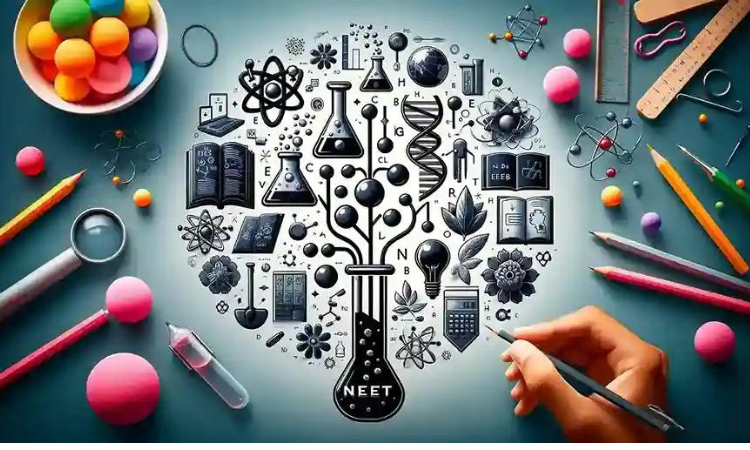
Medical students in India must pass the National Eligibility Cum Entrance Test (NEET) to demonstrate their understanding of core science subjects including Physics, Chemistry, and Biology. Check out our NEET UG- Introduction blog for all the details and tips from two MBBS students. Click here.
NEET 2024 Exam Overview.
| Exam name | National Eligibility cum Entrance test |
| Conducting Body | National Testing Agency |
| Mode | Pen and paper-based |
| Duration | 3.20 hours |
| Courses | The upper age limit has been removed, and anyone can apply for the medical entrance exam. |
| Minimum eligibility | 10+2 with Physics, Chemistry, and Biology However, now even PCM + Biotechnology students can sit for the NEET exam. |
| Minimum NEET Age Limit | Upper age limit has been removed, and anyone can apply for the medical entrance exam. |
| NEET eligibility criteria mark 2024 | The class 12 percentage required for the NEET 2024 exam is separate for each category and can be listed as follows: NEET eligibility criteria marks in class 12 to be considered are aggregate marks only for PCB subjects UR – 50%, OBC/SC/ST – 40%, PWD – 45% |
| Maximum Number of Attempts for NTA NEET | There are no restrictions on the maximum NEET attempt limit, which is 2024. |
| Nationality | Indian Nationals, NRIs, OCIs, PIOs, and foreign national aspirants are eligible to apply |
The Intense Competition
One drawback of Indian medicine is the intense competition. This is entirely because the number of medical seats in India is about 1 lac. And the subsidized medical seats offered by the government are just 50 thousand. The private colleges charge a lot of money for you to be able to study MBBS. The cost varies from 20 lacs to 4 crores for the entire duration of your MBBS. So 20 lac students compete for 1 lac seats. And if you can’t afford a private college, then you have to aim for the 50 thousand seats.
You choose your medical college based on your exam rank and category. You confirm your college options and depending on others’ choices, you may get in the college of your choice.
Eg- We both want to get into AIIMS Delhi as general-category students. My rank is 51 and yours is 50, you will get it and I won’t. It is a choice-based selection. Thus each year cut-offs of colleges change with the choices of students and are not based entirely on marks.
A student from Ahmedabad may choose to stay back, close to his family, and even reject AIIMS Delhi.
OBC, SC, ST, and PwD seats are reserved in each college. Read our counseling posts to understand the process.
The high cost of medical seats at private medical institutions promotes competition. Most candidates and their families cannot afford an MBBS degree worth 50 lacs to 2-3 crores.
Studying for an Undergraduate Medical Degree (MBBS)
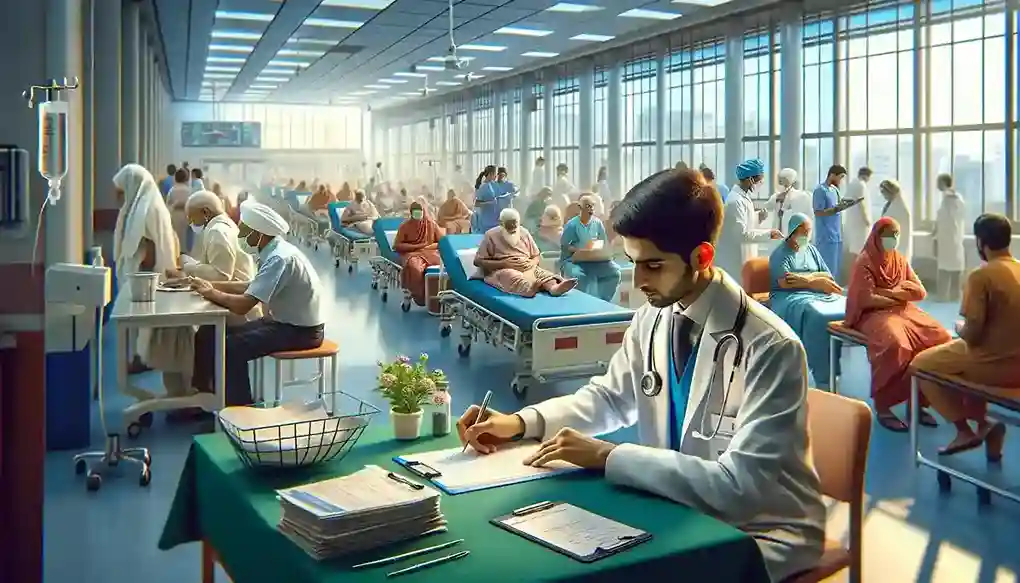
The strict and long MBBS Program:
The 5.5-year MBBS program, which includes an internship, is tough and covers several medical subjects.
4.5 years are spent studying 19 subjects and examining diseases in patients in clinics. The internship lasts one year.
You can either start studying for the NEET PG exam from 2nd year or take a drop year after MBBS. During your postings and internship, you are placed in all the clinical departments such that you learn basic essential clinical practices. It also helps you decide whether you want to specialize in a specific branch or not.
You can start studying for NEET PG from 2nd year. Likewise, you can take up a job after an internship as a medical doctor and simultaneously study for NEET PG.
Postgraduate Medical Education – NEET PG/ NEXT
Medicine Specialization

NEET-PG determines MD or MS specialty after MBBS. Specialization is often impacted by interest and NEET-PG rank.
Due to modifications, NEET PG will soon be replaced by NEXT. Stay current on NEET UG, MBBS, and NEET PG news by visiting our website.
Admission Difficulties
Postgraduate entrance requires a strong academic record and an ability to navigate the admissions process. Deciding what documents to have, what specialization to choose, and which branch is better in which college is a difficult task. Apart from this, there is anxiety around exams as well.
Another Degree- Super-specialization in India?
Super-specialization in your early thirties is your final medical degree. When your school friends will be buying homes and starting families, you will still be studying.
Gynecology and ophthalmology are some “end branches” in India where you can practice “well” without a super specialization. It means patients don’t look for a super-specialist for treatment if they belong to these branches. They’ll come to you for treatment.
But, for eg of Medicine, people prefer specialists like cardiologists, nephrologists, pulmonologists, etc over general medicine doctors.
However, branches like general medicine and surgery require specialization because patients want to consult specialists.
DM and M.Ch. programs are highly competitive.
Due to the biological clock, getting another degree might put pressure on women to marry and have children. I’m the biggest feminist, yet I’ll have to be honest about the biological realities and societal pressures you might encounter. However, the choice is yours, always.
Medical Education Timeline
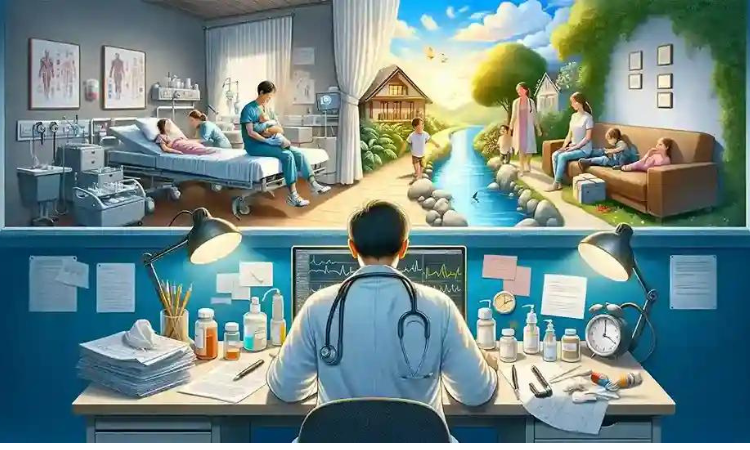
Super-specialty courses add 3-5 years to the school route, causing academic and financial burdens. While your classmates go on vacations, buy houses, and have babies, you will have to study and take examinations until your early 30s.
Doctors’ Career Pathways and Opportunities in India
Diverse Job Markets
In India, there are several professional opportunities in hospitals, research organizations, and private practice. The employment market, on the other hand, is quite competitive. If you get bored of one thing, you can always try out other things.
Differences in Salary
Specialty, geography, and practice type affect Indian doctors’ pay.
Whether you are practicing in India or the US, government or private setting, everything decides how much you will earn.
The government pays the minimum wage for excessive hours and conditions in hospitals. Private hospitals pay more.
Alot of money is made in private practice, where you get paid for your hard work. Like operating a small business, it requires patience. And best of all, you are your own boss.
High Education Cost
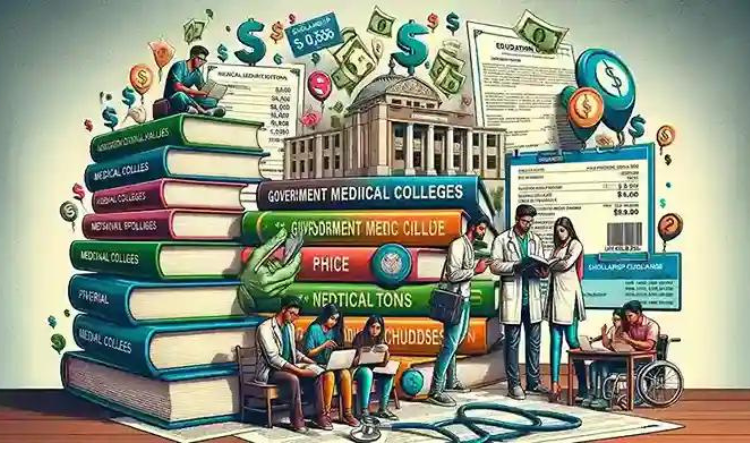
Indian medical education is among the cheapest in the world, especially when compared to the US. The diversified and heavy patient load delivers one of the best clinical experiences.
You get to diagnose and see the rarest of diseases.
If you don’t work hard or you don’t do well in your examinations, getting a government medical seat is challenging. This puts a burden on your finances and also the patient exposure is not as good as the government hospitals.
Government colleges offer MBBS at a very subsidized and low cost.
From Rs 5,000 for five years in AIIMS institutions to 1 lac a year in Maharashtra colleges.
Compared to private colleges, this is inexpensive.
The government has 50,000 seats out of the 1 lac seats. Private institutions charge 50 lacs to 2 crores for 5 years, which is outrageous. This pushes many middle-class families to take out education loans.
But the financial problems don’t stop at just the fees. You also have to consider the cost of medical books, living expenses, food, etc. One medical book can range from 1500 rupees to 6000 rupees or more.
Scholarship and Funding Alternatives
Scholarships and funding are few and competitive. Education loans usually work best.
Yes, the MBBS fees are high, but so are the books. Each book costs around 2000–3000 rupees. So fees alone is not a factor that should be considered while enrolling in a private medical college. Other expenses should also be considered which include books, exam fees, pocket money, etc .
Benefits of being a doctor in India
Being a doctor in India comes with a unique set of advantages, deeply rooted in the country’s cultural, social, and economic landscape. Here are six key benefits:
Respect and Prestige
In India, doctors are held in very high esteem. The profession is associated with nobility, service, and respectability. Being a doctor is considered not just a job but a vocation that commands respect across all strata of society. Honestly, the moment someone calls me a “doctor” or whenever I wear a white coat with a stethoscope, all the hard work is worth it.
Opportunity to Make a Difference
With India’s vast population and diverse health challenges, doctors have a significant opportunity to impact lives directly. Whether it’s working in urban hospitals or rural clinics, doctors can make a real difference in the health and well-being of communities. It is such an honor to take care of people in the way we doctors do. No matter how much money we earn, no other profession can earn the love and respect we get from people.
Career Stability and Security
The demand for healthcare professionals in India is perennial and growing, partly due to the country’s large population. This demand provides doctors with job security and a stable career, which is an attractive proposition in any economy. After COVID, the demand for doctors has increased steadily and will only increase further. It is one of the safest careers in India.
Diverse Specializations
The healthcare sector in India is vast and varied, offering doctors a wide range of specializations to choose from. From traditional medicine to cutting-edge medical research, doctors can pursue careers that align with their interests and can thus work enthusiastically.
Concerns about safety and well-being
Concerns about stress and mental health
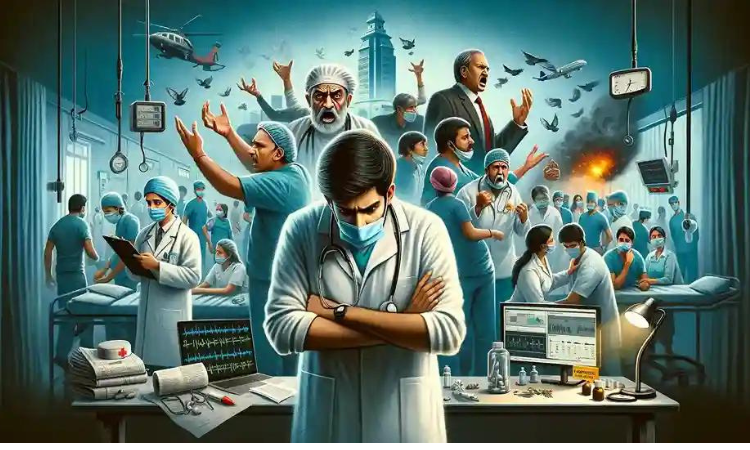
The long journey to becoming a doctor in India sometimes causes stress and mental health issues. Performance pressure and hard study regimens can harm pupils. Bad food, living conditions, and senior-junior interactions can create stress when away from home in a hostel. Workload and stress throughout residency might affect your mental and physical health. However, it is all worth it in the end. The moment you save a life, your problems vanish away.
Medical Practice Safety
Doctors in India are increasingly concerned about safety, especially in hospitals. Stronger security is needed to prevent physician and medical staff violence. If you make mistakes or the patient dies, the family may assault you. No matter the cause, most families just blame the victim. A lot of work needs to be done in this sector from the government’s side. More attention should be given to the safety of the doctors.
Options for Doctors in India to Practice in the United States
Residency and Fellowship in the United States

Indian doctors must pass the USMLE to practice in the US. This requires an understanding of American healthcare and medical processes. It takes longer and costs more than NEET Pg. However, you can repay a debt in 3–4 months when you enter a residency program and earn money.
Obtaining a residency or fellowship in the US entails cultural adjustment and navigating a different medical education system. Click here for USMLE blogs.
Conclusion
People who want to become doctors in India are resilient and dedicated. Despite financial and personal challenges, the road leads to rewarding work that saves lives. Doctors-to-be must persevere, adapt, and focus on their long-term goals.
